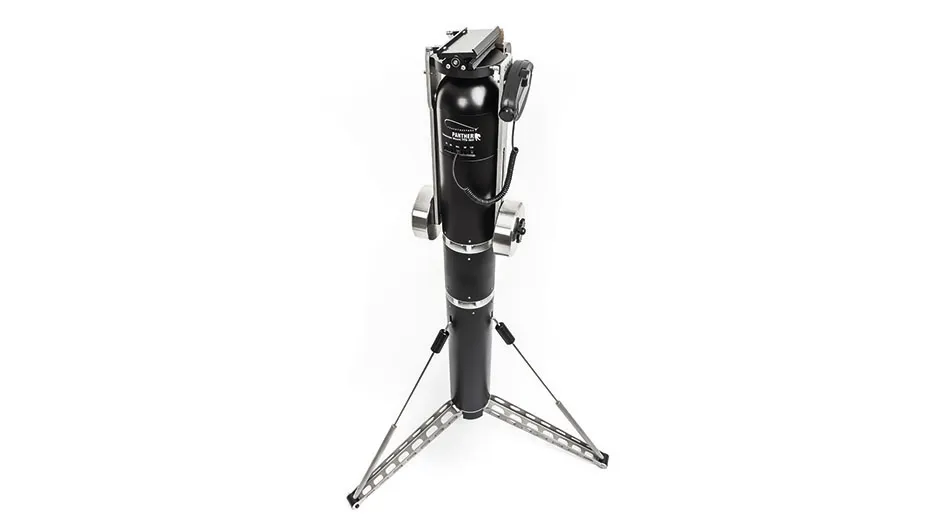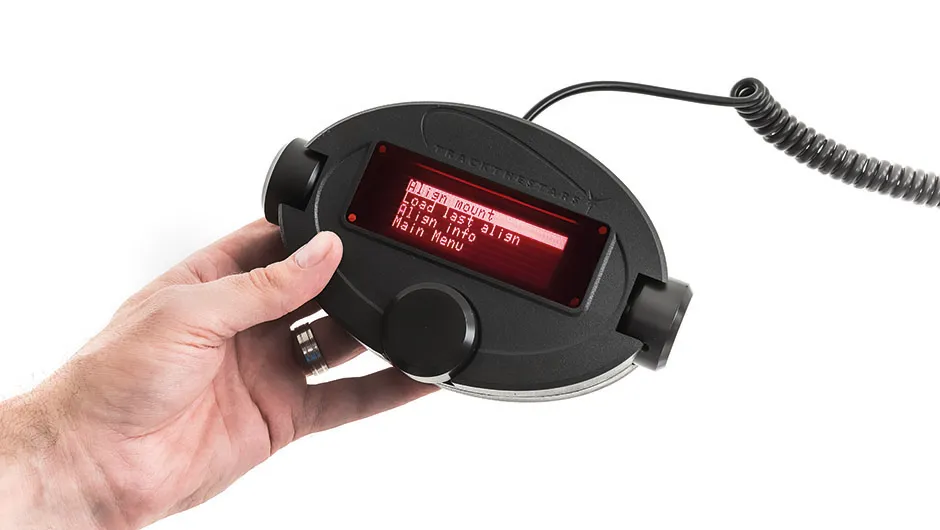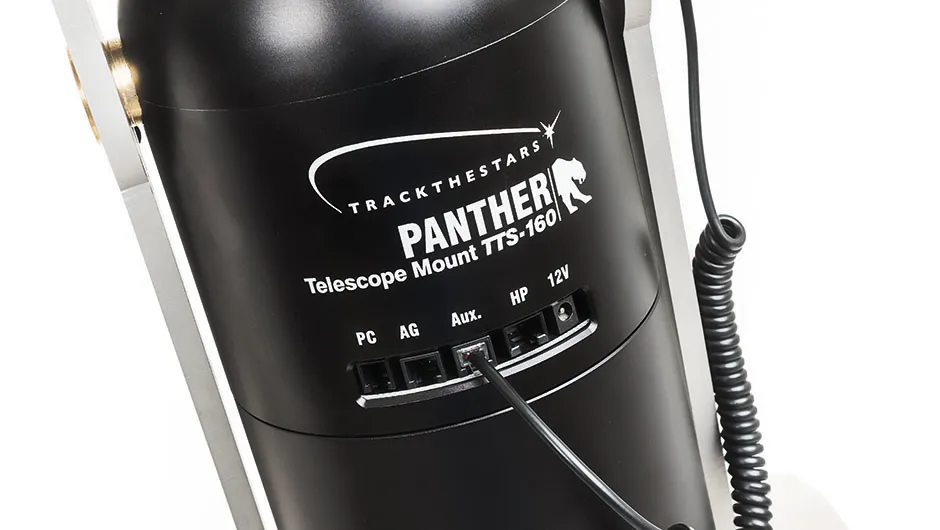The Panther TTS-160 – or the Track the Stars Panther 160 to give it its full name – is an unusual, eye-catching mount.It’s extremely well engineered and offers portability, quick set up, excellent tracking and accurate Go-To capabilities.
Its design also removes the need for a meridian flip during long-exposure astrophotography sessions.
The TTS-160 is modular, its various sections arriving packaged in neoprene travel bags.Our sections included a folding pier base, a pier extension with adaptor and the mount head.
The bottom section has an ingenious fold-out tripod inside the cylindrical pier body.The legs spread out at 120° intervals and are hand tightened to the pier using three tension rods.
Assembly is really quick and easy, which was really handy when an unexpected cloud window appeared one evening when we wanted to image comet 21P/Giacobini-Zinner.The comet was awkwardly positioned behind a building so portability was essential.

As the cloud gap was small, we opted to use the TTS-160.With no requirement to level the mount or polar align, we were up and running in under 10 minutes.
The TTS-160’s central, domed pier has a pivot on either side.A two-arm frame is attached to the pivots with the telescope clamp on top.
The mount’s counterweights each have projecting flanged pins that slide into slots on each arm.The top clamp is Losmandy-style with adaptors available for Synta/Vixen dovetails.
The frame’s position is lockable so you can attach a telescope onto what’s essentially a horizontal saddle.
We can’t stress enough how good this arrangement is; lifting our test 10-inch LX200 optical tube onto the saddle was really easy.
Two additional saddles can be attached to the side pivots if required, bringing the scope count up to three.
Switch on, set up
The TTS-160 is an altaz mount and tracking objects across the sky is achieved by the mount’s on-board computer simulating equatorial motion.
This requires a 12V supply. Unnervingly, there’s no switch; you turn it on and off simply inserting or pulling out the lead.
A quick set-up routine is required and typically involves aligning the mount to one, two or three bright stars.
After two-star alignment, we found the TTS-160 would place selected Go-To targets more-or-less in the centre of field every time.

Tracking accuracy was good too. With a high magnification view of M27, the Dumbbell Nebula, the object remained centred in our eyepiece for several hours.
An issue you can’t ignore when using altaz platforms for long-exposure imaging is field-rotation – the way the imaging field rotates about its centre over time.
The speed of this effect also varies with a target’s location in the sky. Field rotation can be addressed by using a field derotator.
The TTS-160 has an optional Panther telescope rOTAtor to perform this job, and we had one on loan for the review.The rOTAtor fits into the mount’s top Losmandy saddle, presenting the same size of saddle for your telescope to attach to.
A connector lead interfaces the rOTAtor with the mount, the hand pad providing operational control.The rOTAtor was simple to use and worked extremely well, allowing us to take extended exposures.
An oval-shaped handset provides the interface for mount operations.
Three rotate and click wheels provide access to the internal menus as well as controlling variable rate slewing in altitude and azimuth.

It takes time to get used to the handpad and in some instances we found the menu navigation a bit cumbersome.Should you require it or want to, you can also connect the mount to a PC for external control via ASCOM-enabled applications.
Despite its unconventional appearance, the TTS-160 delivers the goods and is a delight to use.It’s not cheap but for your money you get a stable, accurate mount that’s quick and easy to set up.You also get something that’s almost certainly going to turn a few heads.
Handpad
The elliptical handpad uses a four-line display viewed through a removable red filter.Three rotary-click dials let you scroll and select menu items as well as control the mount’s slewing.The handpad attaches to the mount magnetically leading to a minor irritation – the connector cable tends to rotate the handpad upside down.
Interface ports
Five connection ports are provided.One connects to an ASCOM enabled PC, one is used for auto-guiding and one for auxiliary equipment such as the rOTAtor.Another connects the handpad with the final one being used for 12V power.The field-derotating rOTAtor requires 12V.A power-splitter cable divides power to the mount and the rOTAtor.
Counterweights
The TTS-160 has a 22kg capacity with 2x4kg weights for balancing intermediate weight instruments.8kg weights are also available separately.The weights have flanged pins which slide along slots in the mount’s frame arms.A rotary-knob locks the weights in the desired position.Using an optional side-saddle, a small scope can be used without counterweights.
Sectioned design
The base section incorporates folding tripod legs which are hand-tensioned to the lower pier.An optional pier extension gives extra height if required.Thumb cogs screw sections together without the use of additional tools.However, a warning: it’s easy to get carried away while spinning the cogs, giving your thumb and fingers a slight pinch.
rOTAtor (field derotator)
The optional rOTAtor unit is essential if you intend to do long-exposure astrophotography.It connects via an aux port to the mount.Its operation is controlled via the handpad.The unit allows one to three hours of imaging, depending on the target’s location in the sky.After this time, it simply resets itself for the next run.
Vital stats
Price: £4820.00
Supplier: Peak 2 Valley Instruments
Website:www.peak2valley instruments.co.uk
This review originally appeared in the November 2018 issue of BBC Sky at Night Magazine
